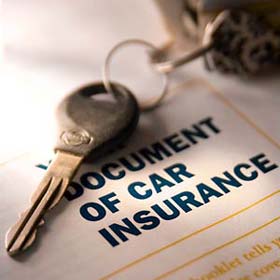Am I a High Risk Driver?
 What is a high risk driver?
What is a high risk driver?
Most drivers don’t have flawless driving records and even fewer are a “perfect” driver in the eyes of an insurance company. There are a number of factors that go into determining the risk associated insuring a certain driver, not all of which actually have to do with their driving record.
- Teenage drivers. Just being a teenage driver is enough for an insurance company to consider you a higher risk than the other drivers on the road.
- New Drivers. Even if you’re not a teenage driver, if you just got your license then insurance companies may consider you a high risk driver.
- DUI/DWI. If you’ve been convicted of driving under the influence many insurance companies will consider you a high risk driver or flat out not cover you. Serious infractions like this weigh heavily on your insurance premiums, do your best to avoid them.
- Credit Score. Insurance companies will sometimes tie your credit score to the odds of you filing a claim, meaning if you have a poor credit score your insurance may cost more. Don’t worry about this one so much though, other factors have a much larger effect on your insurance premiums.
- Multiple traffic violations. If you’ve been in a lot of traffic accidents, especially ones where you’re at-fault, your insurance premiums will be higher.
- No previous insurance. If you were driving without insurance for 6 months before getting insurance you may be considered a high risk driver. Driving without insurance is illegal in many states.
Just having one of these won’t guarantee that you’re a high risk driver, except getting a DUI.
Many states also implement a point system to track when you commit a traffic violation. Insurance companies will look at this to determine your insurance premiums. If you have more than 6 points you could be considered a high risk driver. Most of the time two violations will add up to 6 or more points.
If you want to see your driving record, including the number of points you have against you, you can ask your local Bureau of Motor Vehicles for your record.
What can you do if you’re a high risk driver?
Taking a safe driving course can both reduce the number of points on your driving record and also show an insurance company that you’ve improved as a driver. This alone can be enough to lower your insurance premiums or get you a discount on your insurance.
Examine your driving record. When you request your driving record you will be able to see all the points on your record as well as when they expire. The amount of time it takes for them to expire depends on your state laws, typically it takes 3 years.
Driver safely. Avoiding future accidents and points on your record will lower your insurance rates over time as you go longer without an accident.
When purchasing insurance as a high risk driver, shop around. There are plenty of insurance companies that will cover you, do your research and find the best insurance company for you.
- The Advantages of Salvage Car Parts - November 3, 2025
- Buying Salvage Cars: What to Expect on Auction Day - May 22, 2025
- Is Buying a Hail Damage Car Worth It? A Detailed Guide - December 2, 2024